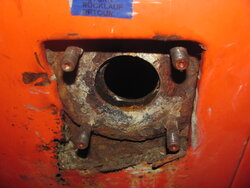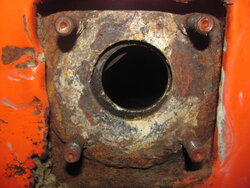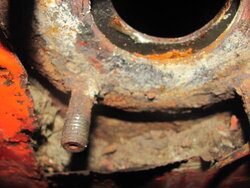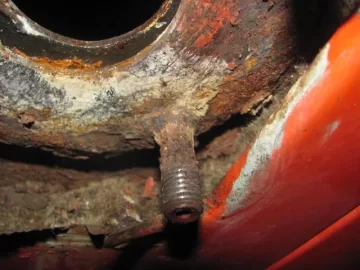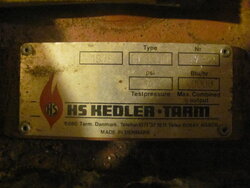As it turns out, my boiler has more problems than i thought. I am so glad i am pressure testing it before i put it in. Today i tried to pressure test my boiler (Tarm OT-50) after finally getting everything back together. At about 45psi i started hearing a leak from one of the flanges on the back. When i went to 50psi it got worse. So, i decided i was going to pull apart both the flanges on the back and replace the gaskets as i figured they were probably the original ones from 1979. I pulled apart the supply flange and it appeared to be fine other than the fact that the gasket was hard as a rock and cracked in several places. When i took apart the return gasket i ran into some problems. As you can see from the pictures below the bottom two bolts on the flange are very rusty and they are missing a section of threads. It appears like the threads just crumbles when i tried to take off the nuts. It looks to me like the guy before me had a leak and didn't take care of it. I have checked the boiler itself and the steel appears to be solid and it did hold at least 50 psi before the gasket started to leak. I've already done a lot to this boiler as far as cleaning it up before i put it in, but this is something pretty major. I need some advise, and the opinions of some people with knowledge about this kind of stuff. What is left of these bolts appears to be solid. The threads that you can see left look really good. I could possibly put a couple washers in as spacers and put the flange back on with a good gasket and get the boiler to pass the pressure test. If it will pass the pressure test could i get away with running it like this for a year or two until i can save up some more money and pay someone to come weld a new flange on? Or is this something that i will have to get taken care of before i can use the boiler at all. If the connection is done right it won't leak anymore so the rust shouldn't get any worse.
